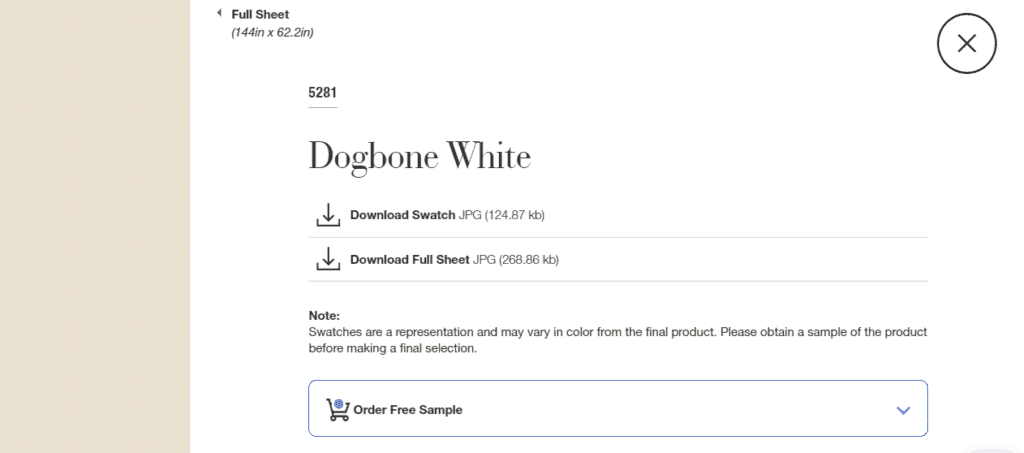In business since 1913, Formica Corp. sells laminates used in countertops, furniture and store fixtures to customers all over the world. But it wasn’t making it easy for buyers to find the materials they needed on Formica.com.

Melissa Weickert, digital marketing strategist, Formica Corp.
“We saw unhappy customers based on customer feedback surveys we had on the website,” says Melissa Weickert, digital marketing strategist at the manufacturer, which was acquired last year by Dutch industrial conglomerate Broadview Holding. “They weren’t able to find the products they were looking for, the colors, patterns or general product information they needed to spec out our products in their projects. That was the major challenge we saw.”
That’s changing as the result of a major website redesign project that includes upgrading to the latest version of the Sitecore ecommerce platform and integrating the site search system from Coveo Solutions Inc. Consulting firm Horizontal Digital helped carry out the project, which began in 2018. The revamped site went live in April 2019.
A central aim of the initiative was to increase conversion, which in the case of Formica.com means customers ordering free product samples. Formica doesn’t sell materials from Formica.com, but it has found that customers who get samples are 75% more likely to place an order for Formica laminates than other website visitors.
Finding the sample order form wasn’t easy on the old website, Weickert admits, and even when site visitors added items to their shopping cart they often didn’t convert. She says the conversion rates for sample orders was only around 20% when the project began. Now it’s in the range of 80-90%.
The redesign took a variety of steps to make it easier to order samples on Formica.com.
In the past it took a site visitor multiple clicks to get to the sample-order option—and even then it wasn’t available for many products, Weicker says. Now the site puts the option to order a sample front and center.

An overlay pops up on Formica.com inviting visitors to order a sample of the product they are viewing.
When someone searches for a product, an overlay appears that offers an immediate download of a digital image of a product swatch or of what Formica calls a “full sheet.” That shows what an entire sheet, usually 5 feet by 12 feet or 4 feet by 8 feet, would look like, including how often a pattern repeats within each sheet, information important for designers and architects.
Designers can load those images into the software they’re using to create a project. The overlay also provides the option to order a physical sample.
More intelligent site search
A big part of the redesign was replacing what Weickert calls “a very basic site search tool” with the Coveo system that makes use of artificial intelligence and machine learning to suggest not only the right products in response to a query but also informational content where relevant.
The Coveo system observes visitor behavior on the site and adjusts its output based on what leads to conversion, which in this case means prompting sample orders. “It’s AI-powered, so it’s learning over time what our users are searching for,” Weickert says. It also features type-ahead search so that when a visitor begins typing in a query, the search tool suggests terms beginning with those letters that others have clicked on.
An analysis of Formica.com data showed there were several very distinct types of individuals coming to Formica.com for information, says Mark Floisand, chief marketing officer at Coveo. And each type requires different types of content. For example, an architect might be interested in the luminosity, or intrinsic brightness of a laminate, while a contractor may need information about its thickness or availability.
Coveo and Sitecore worked with Formica to create personas that reflect the distinct types of visitors to Formica.com. For example, 70% are involved in commercial projects and 30% residential. Coveo uses information about the on-site behavior of an individual, including before he enters a search term, to get a sense of which profile he fits and what he’s seeking, and then serves him relevant content.
The analysis also revealed gaps where Formica.com failed to provide relevant content to search queries. For example, sometimes people searched using the names of competitive products, and the site didn’t have a good way to respond to those searches, Floisand says. “Now they can create content at the product level and post that up,” he says. “Therefore, they have a page that’s indexed and available so when someone uses a competitor’s product term they can answer with a Formica equivalent.”
The redesign also made a simple change that reduced frustration. Previously, the search box was next to an element that allowed site visitors to find a Formica dealer. That resulted in many people typing 5-digit ZIP codes into the search box—and getting no results. Now, the search box has been separated from the dealer-finder element, largely eliminating the entry of ZIP codes into the search tool, Weickert says.
Better tailoring of content to international markets
Another important goal of the redesign was creating a platform that could further Formica’s global reach. The company operates 28 websites in 14 languages, and some products available in one region are not available in another.
Rebuilding those websites on version 9 of the Sitecore platform allowed Formica to create branding and style guidelines for all the sites, while customizing the product mix by region, Weickert says. “Though our branding and look and feel are similar, with the Sitecore platform, and especially being on Sitecore 9, we can really regionalize websites to show individualized product lines for each region,” she says.
She says the flexibility of the platform will enable Formica to add additional websites and languages. “We’ll soon be looking to add a few more, which we couldn’t do before,” Weickert says.
On the roadmap for this year, Weickert says, is enabling customers to create accounts that would save previous orders and shipping information. That would pave the way for greater personalization of the content delivered to returning customers, she adds.
Data collected by the Sitecore ecommerce platform and funneled into the Coveo site search system could be part of this future personalization, says Coveo’s Floisand.
He notes that Formica has multiyear contracts to provide material to Starbucks and McDonald’s for their aggressive store rollouts in China. He says, for example, when Sitecore sees a visitor coming from an IP address in China and from a Starbucks.com domain, the site search tool could present that individual only materials covered by the Formica contract with Starbucks and with the prices negotiated as part of that agreement.
Sign up for a complimentary subscription to Digital Commerce 360 B2B News, published 4x/week, covering technology and business trends in the growing B2B ecommerce industry. Contact Don Davis, editor at large, at [email protected] and follow him on Twitter @DonDavisDC360.com.
Follow us on LinkedIn and be the first to know when new B2BecNews content is published.
Favorite